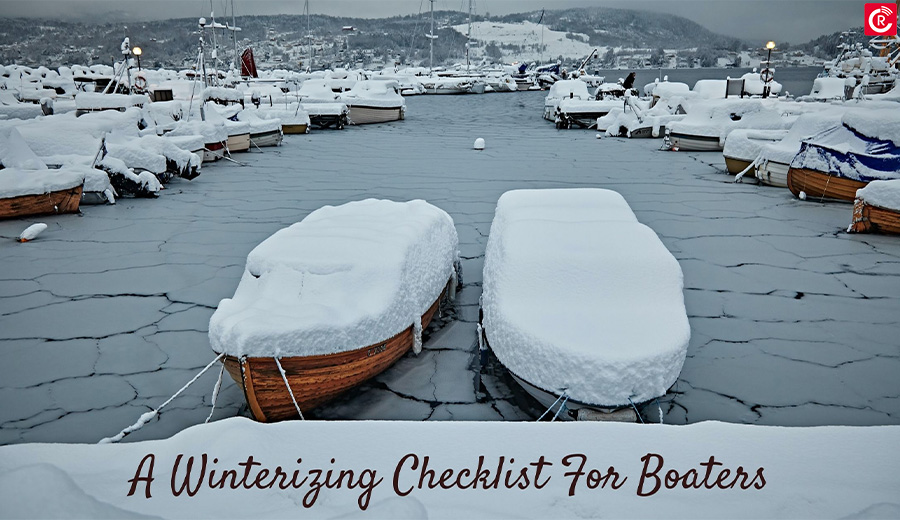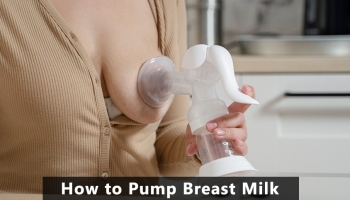
Winter’s here, and time to bid farewell to summer. It is essential to winterize your boat.
So what is winterizing your boat?
Winterizing in simple terms could be explained as draining any water present and replacing it with antifreeze. This helps in shielding your boat from cold temperatures and also helps in keeping your boat in good shape during off-seasons or when you are not fishing with your best fishing reel. So winterizing is nothing but removing water from any part of the boat that can store water. The common elements of the ships that need to be winterized are the bilge, engine heating or cooling system, plumbing, and many others.
In addition, you need to offer a lot of tender love and care to your boat, even if it is out of water. Maintaining the ship with love and respect will help you save money, prevent unwanted expenses, or even avoid replacing expensive parts like engines. Whether your boat is running in saltwater or freshwater, the process of winterizing remains the same for both boats.
How Can You Winterize Your Boat?
Collect all the required equipment and materials needed:
one can purchase a few gallons of antifreeze, motor oil, and fogging oil, oil filter, and unit lube and drain plug gasket, and suction oil pump, followed by the lower unit lube injection. These are just a few of the critical equipment you might need while winterizing your boat. Once you have collected all of these, grab your tool, and you’re ready to winterize your boat.
Removal of water:
It is an essential step in the winterizing process. Hence drain the bilges, engines, heating or cooling system, or any other systems where water has flowed. Do it carefully and do not damage any substantial parts of the machines or trolling motor.
Fuel:
within a span of 60 days, your fuel will start deteriorating, and it will begin building up varnish or gum in your engine. This buildup lowers the engine’s performance and reduces its lifespan. Using a high-quality marine fuel stabilizer will help prevent fuel deterioration and is your only way to avoid damage to the engine. Corrosion is another problem you need to tackle.
In order to do so, refill the tanks with gasoline and start the engine for a few minutes. The gas will spread throughout the system.
Flushing the engine:
If your boat is exposed to saltwater, flushing your engine is very important. Ensure that your engine is completely clean and free of any particle that can be exposed and cause freezing and corrosion. As salt can easily corrode your engine hence removing any amount of water is essential. For an inboard or sterndrive engine, connect a garden hose to your cooling system and flush the engine with clean water using water muffs or a similar device. Then rinse the engine until it reaches standard operating temperature.
Changing the oil:
use suction pumps which can easily be found at the mechanical parts stores, and fill your tubes with non Oxygenated fuel. If you can access non Oxygenated fuel, then it’s good. If you cannot use any available fuel is alright. Add the marine fuel stabilizer to the tank and drive your boat. After landing, remove from the carburetor the spark arrestor and start fogging the engine while the boat is still in the water.
Inspection of the boat motor:
Make sure your boat engine is in good working condition. Followed by this, check the exhaust system for any sign of corrosion. You can do it by simply detaching it from the water muffler and seeing if you see any signs of decay.
Another addition of antifreeze:
Use antifreeze which can specifically be used for boats and not for cars. By putting antifreeze to the portions of your boat that would typically contain water, you are providing a protective layer that will prevent freezing, cracking, and other damage during the cold winter months.
Lubing the lower unit:
Remove, the lower unit’s bottom drain cap. Allow a few minutes for the lubricant to drain before removing the upper exhaust plug. When the old oil runs out, replace it with a new lubricant. By relocating your boat to a warmer location, you can reduce the likelihood of it freezing.
The other aspects of the winterization process, on the other hand, are still required because they are merely preventative, but bringing your boats inside does not assure that they will not freeze.
The other things that you need to do while winterizing your boat are also mentioned below in the form of a checklist.
- Examine the boat for any harm that needs to 0be fixed.
- Fill the tank with fuel, but leave room for expansion.
- Use a stabilizer on the fuel. Then, run the engine for around 15 minutes to ensure that the oil is circulating throughout the engine.
- Close the gasoline valves.
- You should use soap and water to clean the engine. Rinse the machine well.
- Use an aerosol fogging solution to fogging the engine cylinders.
- Grease the grease fittings on the engine.
- Drain any residual coolant and flush the cooling system with non-toxic antifreeze.
- Consider investing in a dehumidifier to remove extra moisture from the air and prevent mildew.
- Please remove the battery and put it somewhere safe and dry.
- Remove any natural vegetation or crustaceans from the boat’s interior and exterior.
- It is best if you secure your boat
- Your boat should be covered and stored.
- Remove any valuables from the boat’s interior.
- Remove any food or liquid from the boat.
Conclusion
Winterization is one of the most critical procedures for maintaining your boat. Proper maintenance, such as winterization and upkeep, is essential to ensure that your boat lasts a lifetime. It helps in protecting your boat from cold temperatures. Any form of water can cause freezing and damage the components of your boat. Ice and water can induce moisture accumulation in specific settings, which can lead to material degradation.
In addition, your watercraft may potentially be harmed by strong winds. A boat that has been winterized is effectively protected from the elements. When inboard and outboard engines are stored for an extended period, fogging oil protects them from corrosion.
Following the steps mentioned earlier will help you ultimately to winterize your boat and avoid any damage that could be severe or expensive; significantly, it will help in protecting your motor and engine. It is advisable to use some guidance if you are new to this work to avoid any further expenses caused by the damage of any equipment.





